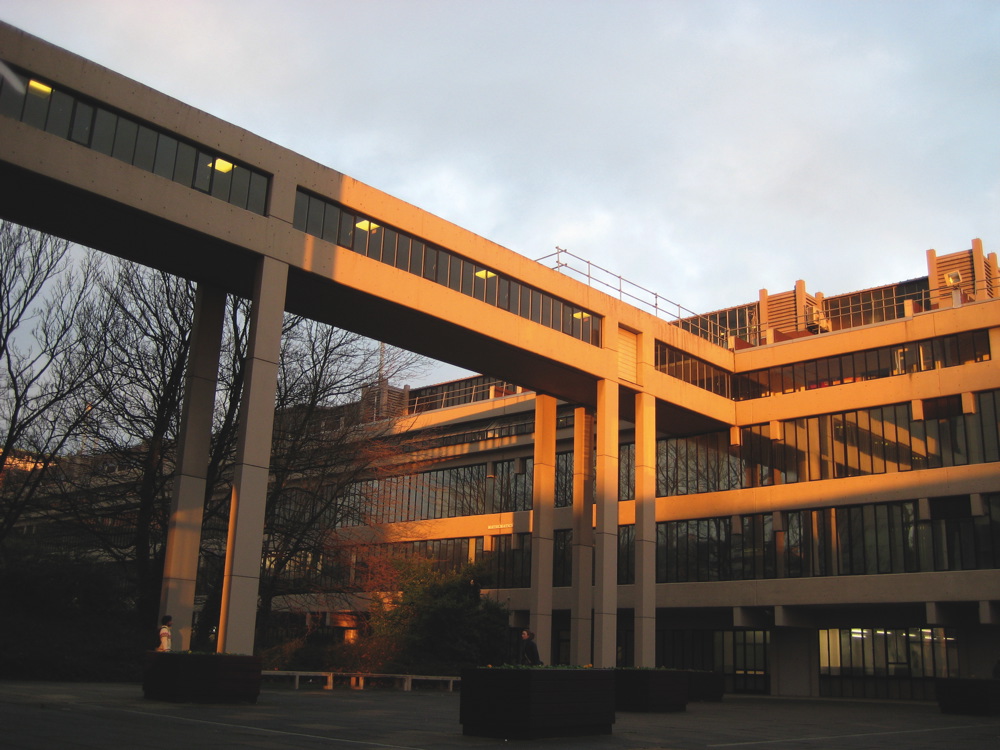The brutal truth
Disliked by many, Brutalism is the greatest architecture there has ever been, argues Barnabas Calder
1960s architecture is growing in popularity, but still divides opinion: is concrete beautiful or ugly? Are classical columns nicer than rectangular Brutalist ones? Are monumental buildings exciting or oppressive? All this is a matter of taste, and if you prefer half-timbered pubs to tower blocks, that’s fine.
What this kind of discussion misses, though, is that the 1960s saw objectively the biggest and most technically remarkable building boom the country had ever seen. Fuelled by cheap oil and coal, the country exploded into construction, with tens of thousands of architects and engineers, and hundreds of thousands of building workers giving all their effort to the design and erection of whole new types of building: NHS hospitals, high-rise council housing, multi-storey car parks and so on.
With the miraculous engineering capabilities of reinforced concrete, architects could pull their buildings around into never-seen shapes, revolutionising everything from universities to housing, and could provide ordinary people with facilities like central heating, plumbed bathrooms and lifts, many of which were still at the time new and exciting for the rich. Brutalism was the architecture of the shrinking post-war wealth gap. As the wealth gap grows again, we should be admiring the architecture of the greatest age of equality this country has seen.
You don’t have to like the look of Brutalist buildings to admire the courage, ingenuity and passion of their designers, and the skill of the concrete workers who (despite a small number of high-profile failures) raised the art of concrete construction to a level of great expertise within just a few short years.
Once you start to acknowledge that these buildings were serious and heartfelt, it is not so big a jump to see that they also have their own beauty. If you have been impressed by medieval castles or cathedrals, or mountains and cliffs, or the power of waves crashing against the shore, you have it in you to admire the similarly frightening magnificence of the best Brutalism. Just as films and music would be pretty boring if they only drew on fuzzy positivity, cities too would be dull if they had only nice little buildings. Why shouldn’t architecture for important purposes make a big statement in the city? Why should buildings that were vastly technically superior to anything that had come before be hidden behind imitations of structures from older, more primitive, less socially progressive periods?
Here are eight of my personal favourites from northern England, some gone, some going, some loved and safe.
Kingsway Tunnel vents
The two road tunnels under the Mersey both have large ventilation shafts to pump fresh air in and vehicle fumes out. The 1930s vents have a handsome pomposity to them, and record the social attitudes of the time by using posh stone in rich central Liverpool, and cheaper brick for industrial Birkenhead. The 1970s Kingsway vents treat both shores equally, with their celebratory space-age shapes, and take their shape not from architectural history but directly from the function of the vents: intakes and chimney are completely apparent.
Dunelm House, Durham
The University of Durham’s Student Union steps down the beautiful bank of the Wear just next to an elegant footbridge, looking out onto greenery, water, and the cathedral. If you can’t take the punch of hard Brutalism, this is a gentler starting point for you.
Rowlandsway House, Wythenshawe (demolished 2014)
This is one for die-hard Brutalism fans. Largely windowless, the car park and the computer centre looked pretty similar, with very little windows to soften the blocky ominousness of the raw concrete walls. I’m sad it’s gone. Many aren’t.
Royal Liverpool University Hospital
Due for demolition, this is one of tens of such impressive hospitals built for the expanding 1960s NHS. Confident in the value of its purpose, the architects made no effort to make the building seem cosy or domestic: it’s a great big hospital built to look after a great big population, and that’s what it looks like. Eagles should nest on its cliff-like walls.
Park Hill, Sheffield
This was among the most famous buildings in the world when it went up, and is the largest listed building in the UK: a large housing estate folded round into a single sinuous block, marching resolutely down the hill. For my money, the grimy parts of the estate are more beautiful than the slickly colourful, renovated bits.
Trinity Square, Gateshead (demolished 2010)
Best known for its starring role in the Michael Caine gangster film Get Carter, this was a superb piece of architecture with or without falling gangsters. It dominated Gateshead with the same confident strength with which Bamburgh Castle dominates its stretch of coast, and from near or far its muscular profile was a monument to the excitement felt by so many in the 1960s when they could first afford the freedom brought by owning a car.
Preston Bus Station
Loathed by most until recently, after it was threatened with demolition many have come to see the glory of this well-preserved bus station with its delicately curved carpark parapets running in almost endless
sweeping lines.
University of Leeds
One of Britain’s boldest Brutalist design teams, Chamberlin Powell & Bon, produced this magnificent landscape of concrete buildings, staircases and bridges (main photo) at the same time as they were designing the Barbican in London. The architecture is simple but strong, and the effect is overwhelming, the jazzy lecture theatre block in the middle dramatised by the grandeur of the approaches to it, and the effortlessly leaping bridges above.
Dr Barnabas Calder is the author of Raw Concrete: The Beauty of Brutalism (William Heinemann, April 2016). He is senior lecturer in architecture at the University of Liverpool. Follow him on Twitter @BrutalConcrete.

Leave a reply
Your email address will not be published.